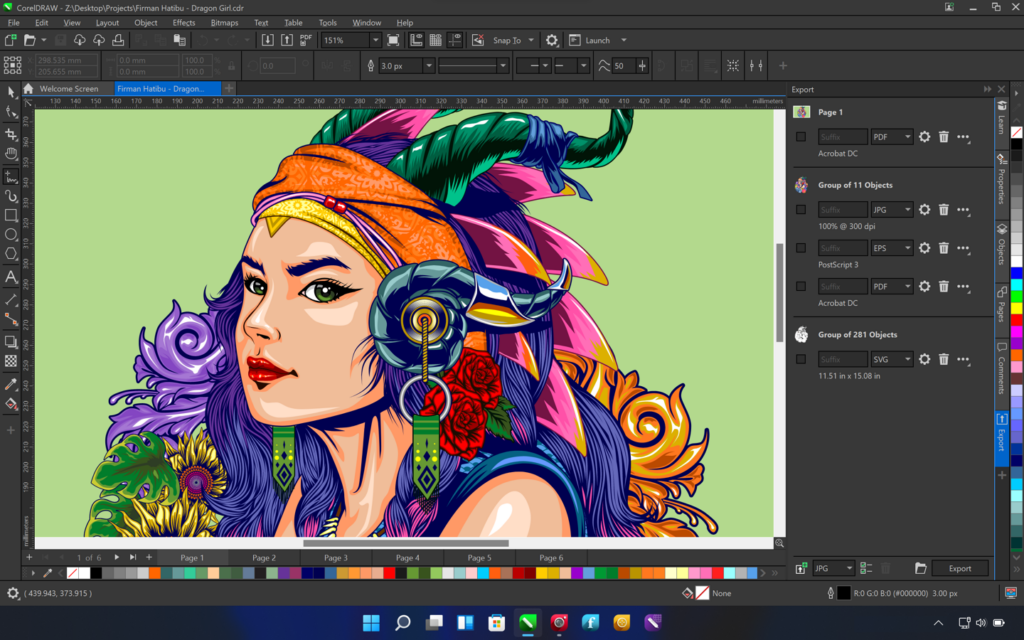Mastering Design Clarity: A Comprehensive Guide to Adjusting the Visibility of Inactive Objects in CorelDRAW

Introduction:
CorelDRAW, a cornerstone in the graphic design domain, continues to empower designers with an array of tools designed for precision and creativity. Among these features, the ability to adjust the visibility of inactive objects plays a pivotal role in managing complex design projects. This exhaustive guide is dedicated to unraveling the intricacies of adjusting the visibility of inactive objects in CorelDRAW, catering to both beginners seeking foundational insights and seasoned designers aiming to refine their skills.
I. Understanding the Significance of Adjusting Object Visibility:
- Managing Complexity: As design projects evolve, they often become more intricate, involving numerous objects, layers, and groups. Adjusting the visibility of inactive objects allows designers to focus on specific elements, managing complexity and enhancing overall workflow efficiency.
- Precision Editing: The ability to selectively control object visibility facilitates precision editing. By isolating and making visible only the relevant elements, designers can fine-tune details without distractions, ensuring a more accurate and streamlined design process.
II. Basic Techniques for Adjusting Object Visibility:
- Visibility Toggle: CorelDRAW provides a straightforward visibility toggle for individual objects. Utilize the “Show/Hide” button in the Object Manager or right-click on an object and choose “Hide” to make it temporarily invisible. Use the same process to reveal hidden objects.
- Hide and Show Commands: The “Hide” and “Show” commands, accessible from the Object menu, offer an alternative method for adjusting visibility. These commands allow designers to toggle the visibility of selected objects, layers, or groups with precision.
III. Navigating the Object Manager:
- Visibility Icons: The Object Manager serves as a hub for managing visibility. Familiarize yourself with the visibility icons – an eye symbol – next to each object, layer, or group. Clicking on these icons toggles the visibility status, providing a visual cue for the current state.
- Show Only Selected: Enhance your control over visibility by using the “Show Only Selected” option in the Object Manager. This command hides all inactive objects, allowing you to focus exclusively on the selected elements and streamline your design workspace.
IV. Advanced Techniques for Visibility Management:
- Isolation Mode: Isolation Mode allows designers to isolate specific objects for detailed editing. By double-clicking on an object, you enter Isolation Mode, where only the selected object is visible. Exit Isolation Mode to revert to the full design view.
- Adjusting Layer Visibility: Manage visibility on a larger scale by adjusting the visibility of entire layers. Right-click on a layer in the Object Manager and use the “Show All” or “Hide All” commands to control the visibility of all objects within that layer.
V. Dynamic Visibility in Design Exploration:
- Navigating with Dynamic Visibility: When working on intricate designs, use dynamic visibility adjustments. Toggle the visibility of different objects on the fly to explore design variations, compare elements, and make informed decisions about the overall composition.
- Visibility in Multi-Page Documents: For multi-page documents, each page’s visibility can be controlled independently. Utilize the Object Manager to manage visibility across pages, ensuring consistency or introducing variations based on your design requirements.
VI. Troubleshooting and Best Practices:
- Reviewing Hidden Objects: Regularly review hidden objects to avoid unintentional oversights. Use the Object Manager to identify and reveal hidden elements, maintaining a comprehensive understanding of your design.
- Optimizing Workspace Performance: Large and complex designs may impact performance. Optimize your workspace by managing object visibility efficiently, particularly in projects with numerous layers and groups.
VII. Collaboration and Visibility:
- Synchronizing Visibility: In collaborative design environments, synchronize visibility to ensure a consistent view among team members. Clear communication about object visibility contributes to a more coherent and collaborative design process.
- Sharing Design Variations: When presenting design variations, leverage visibility adjustments. Showcase different iterations by selectively revealing or hiding objects, allowing stakeholders to compare options seamlessly.
Conclusion:
In conclusion, the ability to adjust the visibility of inactive objects in CorelDRAW is a cornerstone skill for designers seeking precision and control in their creative endeavors. As designers navigate through the step-by-step guide and explore advanced techniques, they gain mastery over this powerful feature. By incorporating best practices, troubleshooting effectively, and understanding the nuances of collaboration, designers can harness the full potential of visibility adjustments, ensuring a streamlined and efficient design workflow. Embrace the clarity and precision offered by CorelDRAW’s visibility management tools, and unlock new dimensions of creativity in your design journey.







